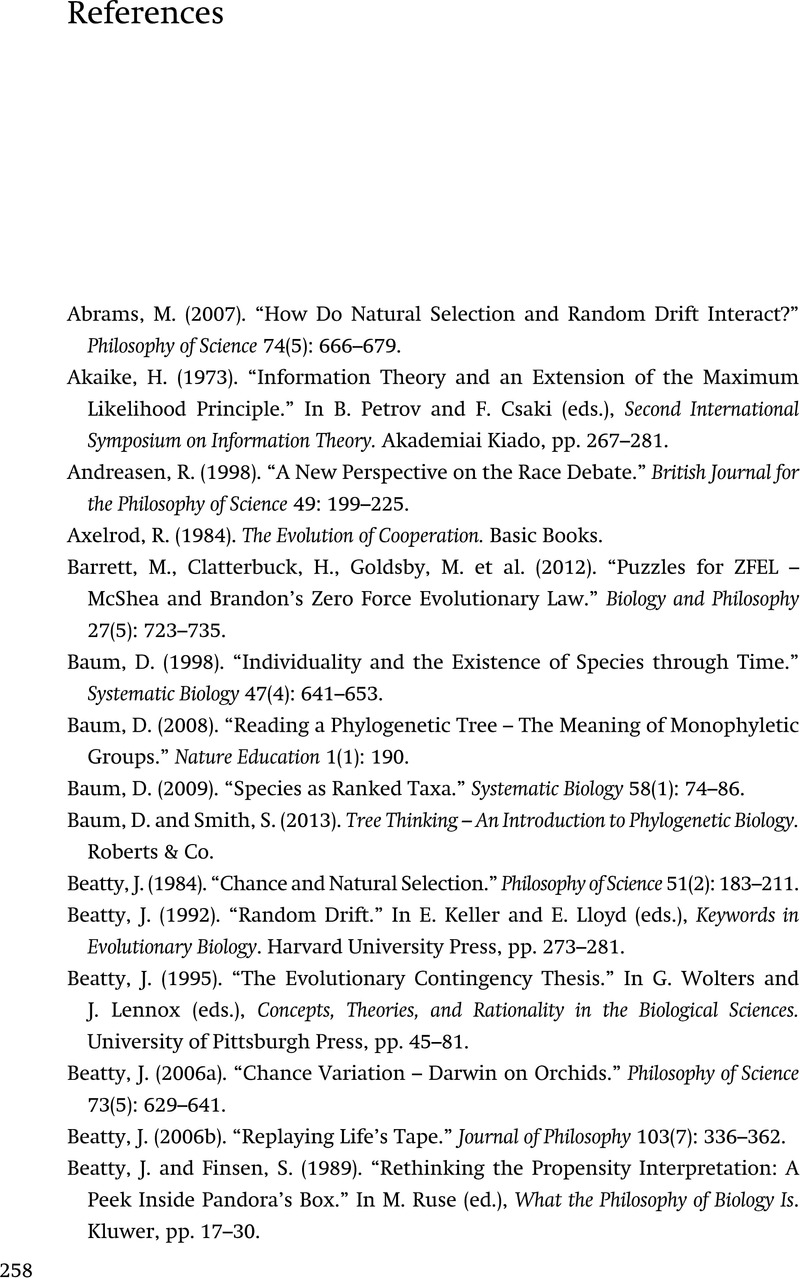Book contents
- The Philosophy of Evolutionary Theory
- The Philosophy of Evolutionary Theory
- Copyright page
- Dedication
- Contents
- Figures
- Tables
- Preface
- Acknowledgments
- 1 A Darwinian Introduction
- 2 Fitness and Natural Selection
- 3 Units of Selection
- 4 Common Ancestry
- 5 Drift
- 6 Mutation
- 7 Taxa and Genealogy
- 8 Adaptationism
- 9 Big-Picture Questions
- References
- Index
- References
References
Published online by Cambridge University Press: 01 February 2024
- The Philosophy of Evolutionary Theory
- The Philosophy of Evolutionary Theory
- Copyright page
- Dedication
- Contents
- Figures
- Tables
- Preface
- Acknowledgments
- 1 A Darwinian Introduction
- 2 Fitness and Natural Selection
- 3 Units of Selection
- 4 Common Ancestry
- 5 Drift
- 6 Mutation
- 7 Taxa and Genealogy
- 8 Adaptationism
- 9 Big-Picture Questions
- References
- Index
- References
Summary

- Type
- Chapter
- Information
- The Philosophy of Evolutionary TheoryConcepts, Inferences, and Probabilities, pp. 258 - 280Publisher: Cambridge University PressPrint publication year: 2024



